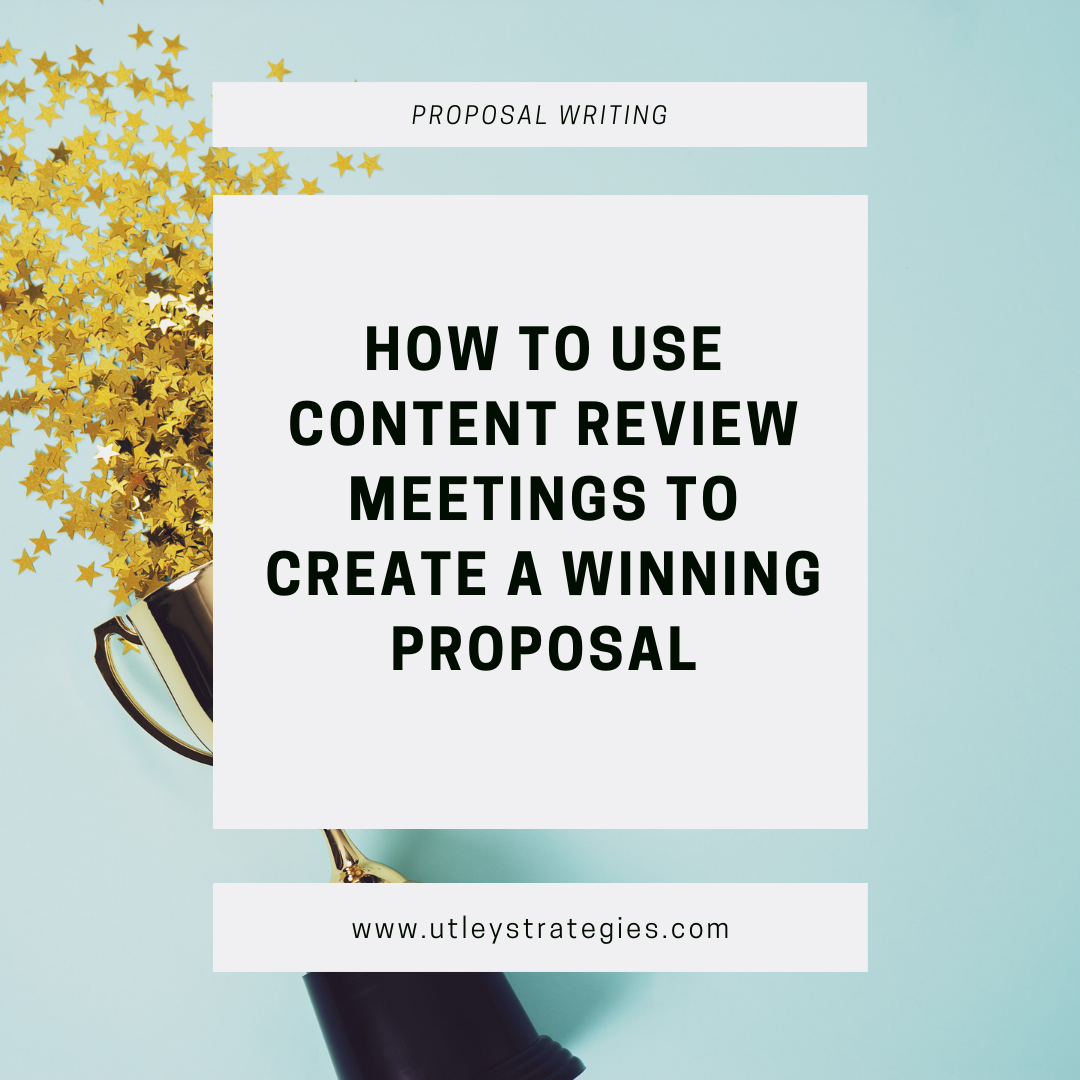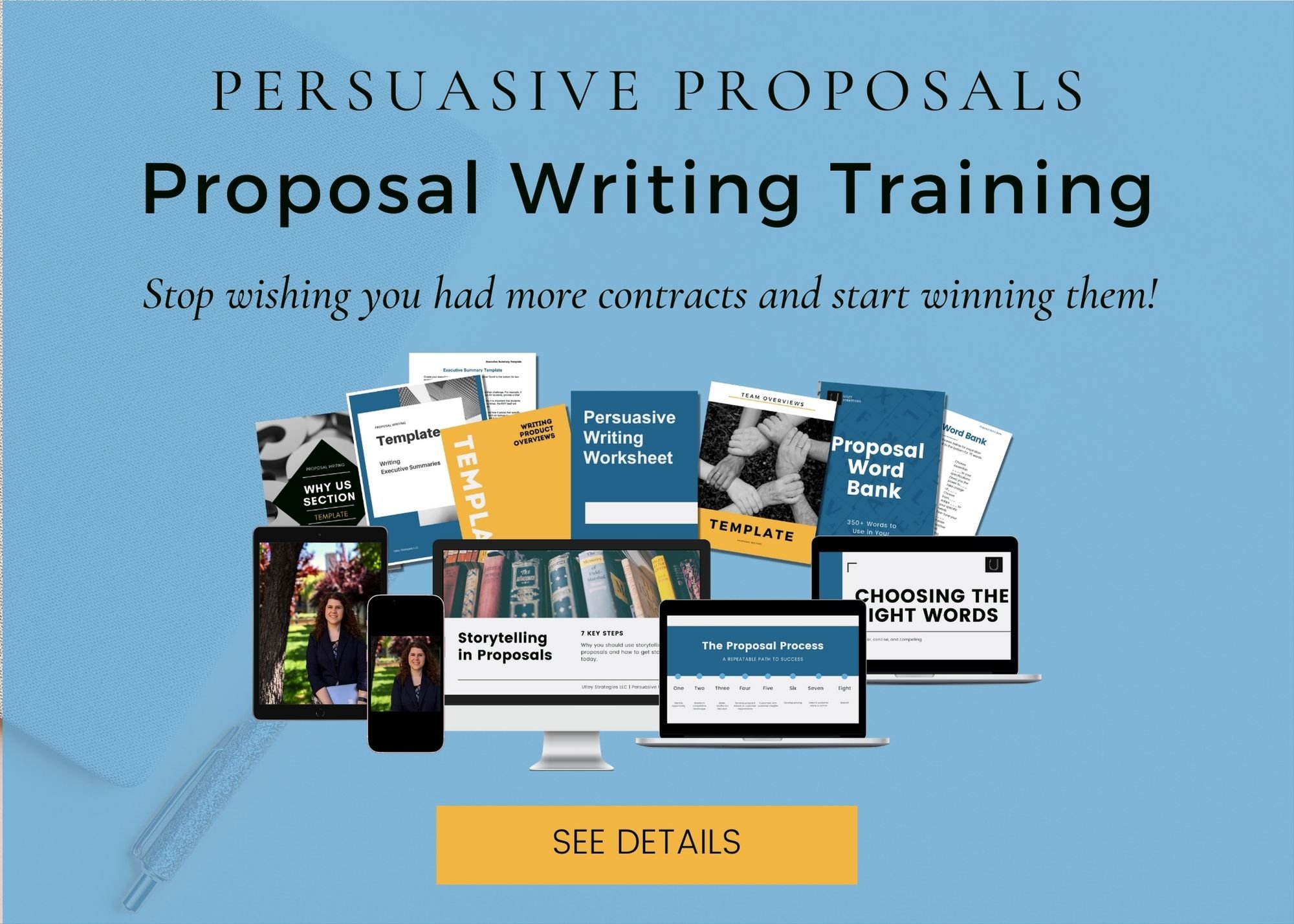How to Use Content Review Meetings to Create a Winning Proposal
Creating winning proposals is the top of every B2B companies’ list of goals. Despite having the same target, almost every company has a different approach when it comes to creating proposals. Some companies create proposals very infrequently, and they write them only as needed. Others use past proposals for content for their most recent proposal.
The next step is to have a content library that you can use as a starting point to tailor your proposals. Few organizations implement the content review meetings recommended by Shipley as part of their proposal creation process. No matter your content development approach, if you’re ready to create proposals that customers want to read, then it’s time to start reviewing your content when you create your most high priority and strategic proposals.
Pink Teams -- Content Brainstorming
What
The Pink Team is the main content development meeting for your proposal. During this meeting, you will discuss the competition and your main differentiators, develop win themes (i.e. how you compete and will win), and a preliminary list of features-benefits to include in key sections of your proposal. Depending on the timeline and the makeup of your team, you may already have a draft of the proposal written, but it’s not necessary.
How
How to run a Pink Team varies with each company, but it’s typically best to have a structured plan to follow within the meeting or you will quickly begin editing or writing content prematurely. For complex proposals with adequate time, it works best to split the Pink Team into several meetings where you can invite a smaller group to contribute to key areas. No matter the size, you should plan the meeting to take at least two hours (often longer).
To determine what to cover, begin with the evaluation criteria or factors that the client will use to evaluate the proposal. Some sections may strictly be a compliance requirement and will not require as much review as high-scoring areas. You can use this as a guide to decide where to spend time in the meeting. If evaluation criteria are not provided, work with your sales team to understand what is important to the client and use that as the basis for the Pink Team.
Once you have the topics to cover, create a template to be completed either before or during the meeting by the attendees. Before is preferable so everyone comes prepared with ideas for the meeting. The document should ask questions around key themes, features of your solution, benefits to the customer, and what the competition will propose (if you have that information).
The result of this meeting will be a list of key themes to incorporate throughout the proposal, the specific ways that your solution exhibits those key themes with clear benefits to the customer, and the sections of your proposal where that information should be included. The proposal writer or team will then use this information to draft the proposal.
When
This meeting should take place early in the proposal development process. If you have a 4-week timeframe, for example, hold this meeting at the end of the first week. You should already have had a kickoff, established roles, began gathering hard-to-find content or information, and have developed a rough outline (if it’s an RFP with specific formatting requirements).
Who
It is important to have different perspectives during a Pink Team, but with a group too large either no one will contribute or everyone will, which can easily take you off topic. An ideal size is 3-8 people. If you need input from many different individuals and have time, split the reviews into smaller groups and have key individuals (normally the account owner or CEO) join every meeting. If this isn’t an option, require prep-work before the meeting and set a timer to keep the team on track.
Red Teams -- Proposal Evaluation
What
A Red Team review occurs when a near-final draft is ready to be reviewed by the team. During this meeting, you will evaluate the proposal and score it as if you were the evaluation committee. The goal here is to identify any gaps in content, unnecessary or distracting content, and refine language, graphics, or format for clarity.
How
Depending on the length of the proposal, you should plan on this meeting to be at least 2 hours. If it is a longer proposal or you require a lot of input, break this into multiple meetings.
Since this is an evaluation, you will need to prepare an evaluation sheet to score the proposal. Break the evaluation sheet into sections based on the evaluation criteria, and provide clear guidance on what to review and how to evaluate. This should be provided to the team at least 1 day before the meeting (ideally 2) along with the draft of the proposal for review.
During the meeting, everyone will share their scores for each section and specific ways that the proposal can be improved. This might be editing content, adding more information, or removing sections. It is very easy for this to become an editing session, so be sure to keep reviewers on track.
The goal of this meeting is to identify final areas to be improved that will result in a better evaluation score for your proposal. The proposal team will then take this feedback and incorporate it into the proposal as needed.
When
The Red Team will occur near the end of the proposal process. In the 4-week timeframe, this meeting will ideally take place at the end of the third week. Your draft should be near-final (meaning every section has content that has already been reviewed), and you will need a few days after the meeting to make any updates to content.
A single Red Team review is standard, but some companies will evaluate again after changes are made to confirm improvement. Due to timing and schedules, this isn’t always possible.
Who
It is best to keep this review smaller, and ideally at least one person should not have worked on the proposal to provide an objective perspective. Typically someone from sales, the proposal team, and a solution expert will attend with 1-2 outside evaluators.
White Gloves -- Compliance Check
What
A White Gloves review focuses on reviewing your proposal for compliance, not content. The goal with a White Gloves meeting is to ensure your proposal will be received and not tossed because it does not comply with specific requirements (typically formatting). This is especially helpful for complex government proposal submissions.
How
For this meeting, you will need to prepare a checklist based on the requirements of the RFP. For example, if the RFP requires 12 point font, 10 forms, and a specific order, then all of these (individually) will be included in the checklist. You can provide this at the beginning of the meeting.
This review will be of a final proposal because if there are no issues, you will immediately submit after the review. The team will review the entire proposal together for compliance and check off each requirement on the list. If the RFP requires hard copies, everyone should be reviewing hard copies.
When
This review takes place immediately before submission. If hard copies are required, production should already be completed. This is the final step before submitting the proposal.
Who
Since this is the final step, this meeting only needs individuals who provide final sign-off on the proposal. Oftentimes this may simply be the sales person and the proposal manager. A larger group may attend depending on the importance and complexity of the RFP (i.e. if there are 6 hard copies required, 6 team members should attend). The focus should be solely on checking for compliance. Any changes at this point are essential to the acceptance of the proposal. Small grammatical errors or language changes will not be made.
Once approved from the White Gloves review, you’re ready to submit your proposal!
Next Steps
If you’re ready to start implementing these review meetings in your proposal process, the first step is to identify a proposal where this level of review is ideal. Not every proposal requires this level of effort. Instead, focus on implementing these tactics on those that you are positioned to win and/or are high priority for your company.
If you need help getting started we can help.



